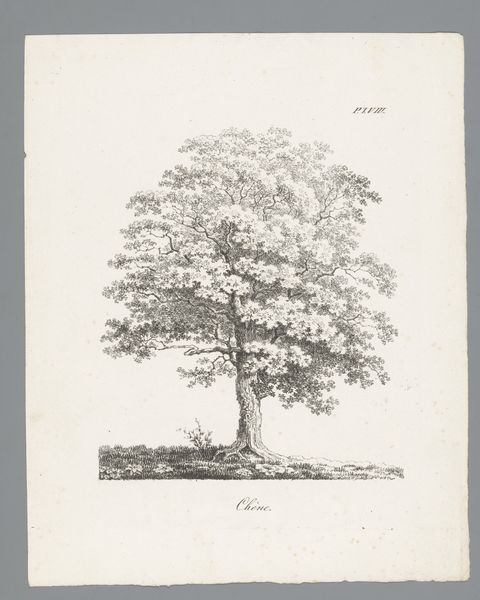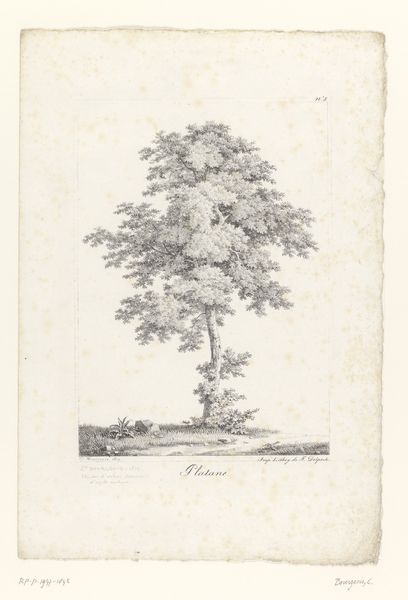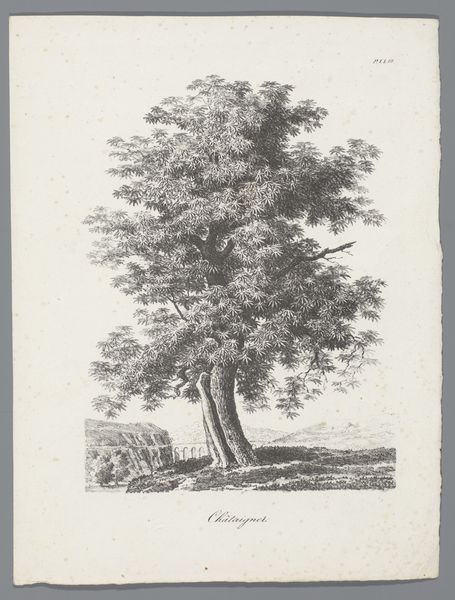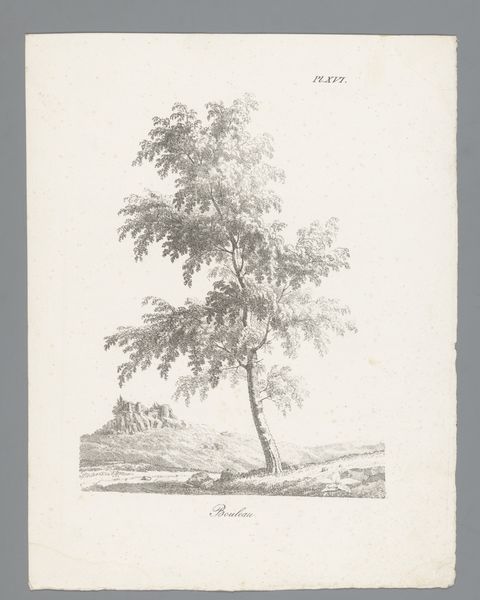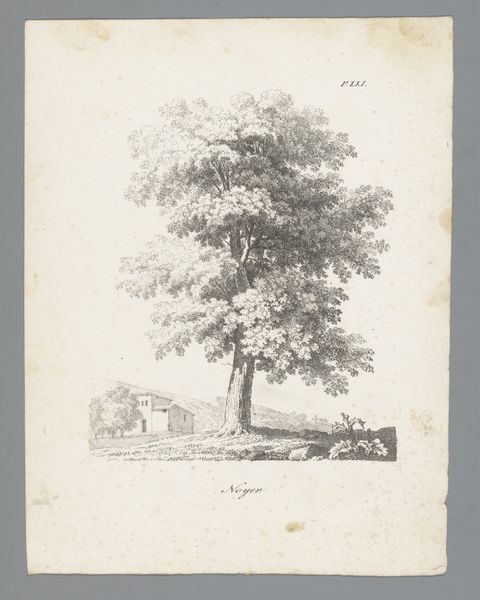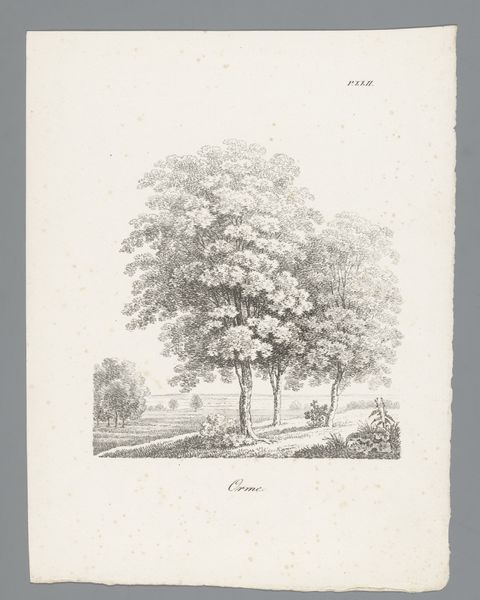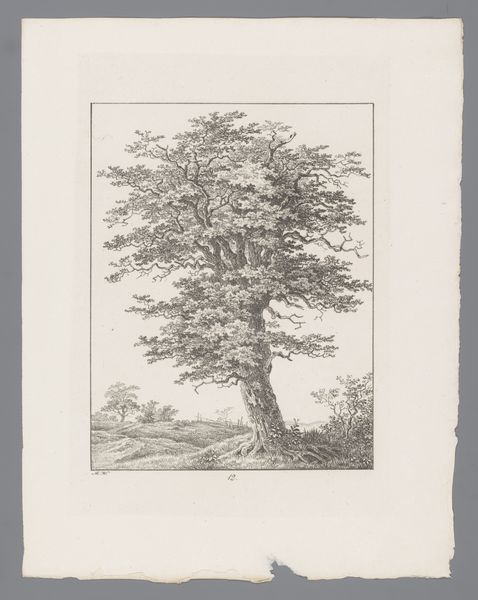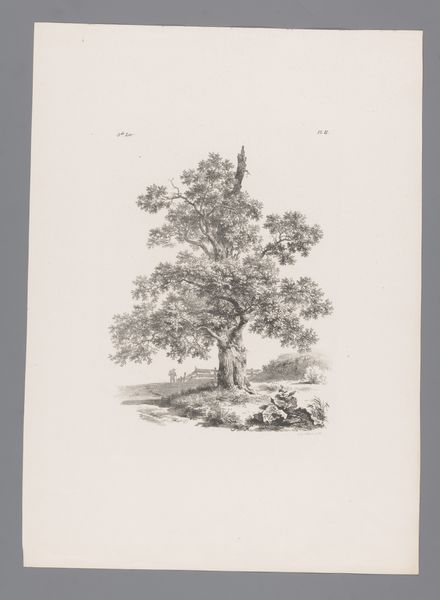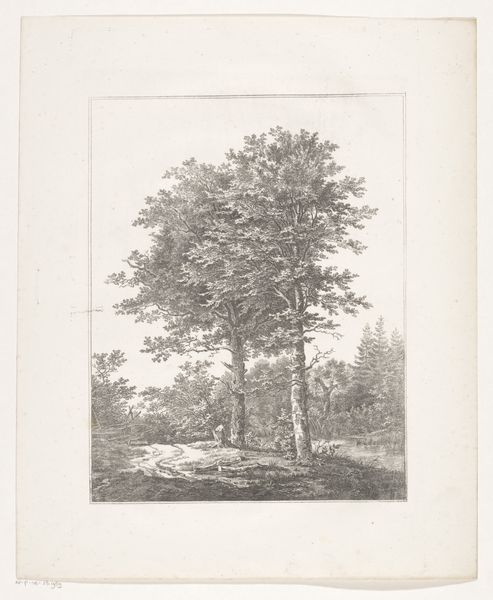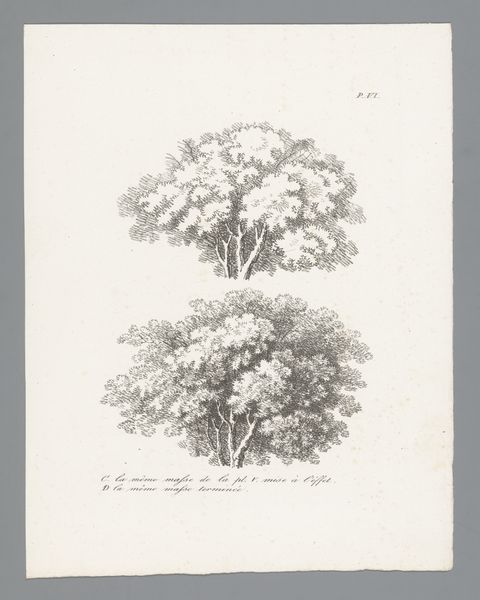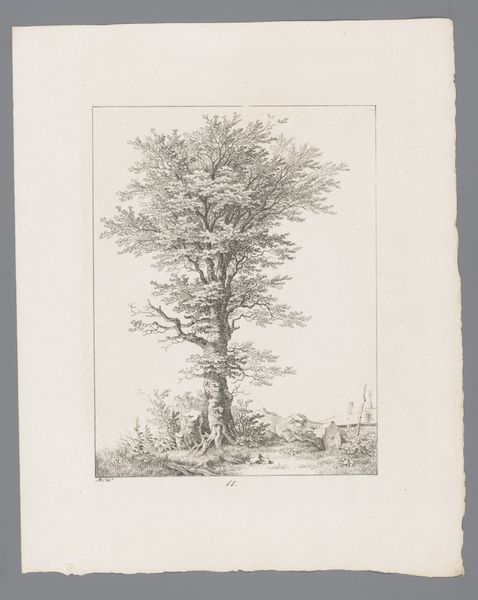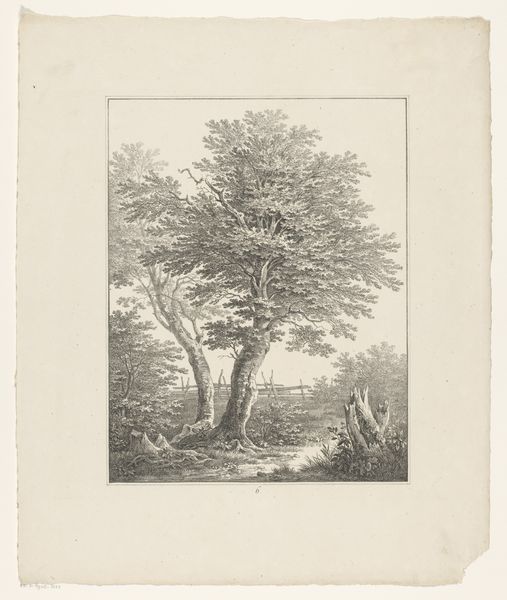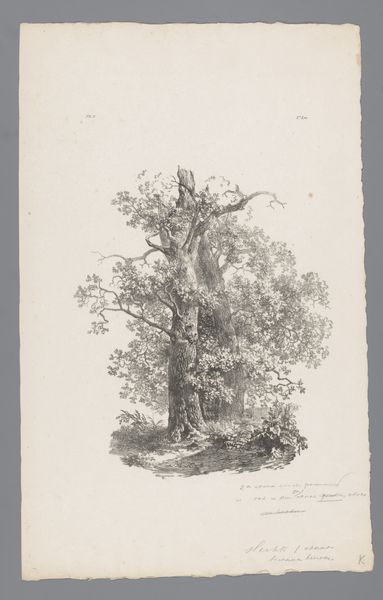
print, engraving
# print
#
landscape
#
romanticism
#
line
#
engraving
#
realism
Dimensions: height 304 mm, width 240 mm
Copyright: Rijks Museum: Open Domain
Editor: Here we have "Haagbeuk", a print, specifically an engraving, by J. Bernard, dating from around 1820 to 1833. The meticulous detail, the almost reverent focus on this single tree…it's quite striking. What do you make of it? Curator: It is compelling, isn’t it? At first glance, we see a Romantic landscape, typical of the era. But consider its context. Early 19th century Europe was experiencing rapid industrialization. Landscapes, especially trees, were increasingly viewed as resources to be exploited. An image like this becomes an act of resistance, a declaration of the tree's inherent value. Editor: So you're seeing it as a kind of protest? An argument for environmentalism before environmentalism as we know it existed? Curator: Precisely. Romanticism often served as a backlash against the Enlightenment's focus on reason and progress, especially at a time when rural populations experienced displacement from commons land into newly emerging urban landscapes. The deliberate focus on this tree as an individual, not just lumber, asks us to consider our relationship with the natural world and even its inherent rights. Editor: It's interesting to consider it within that power dynamic. The delicate lines become almost like an act of preservation. Curator: And what does it say about our relationship to natural resources today, given that such visual arguments are now easily circulated and endlessly duplicated? Has increased access cheapened their initial challenge? Editor: Wow. I hadn't thought of it that way at all. It makes me wonder about the role of art as activism across different eras. Curator: It reminds us that art is rarely neutral; it is a reflection of the power structures it exists within, and often, a challenge to them.
Comments
No comments
Be the first to comment and join the conversation on the ultimate creative platform.
